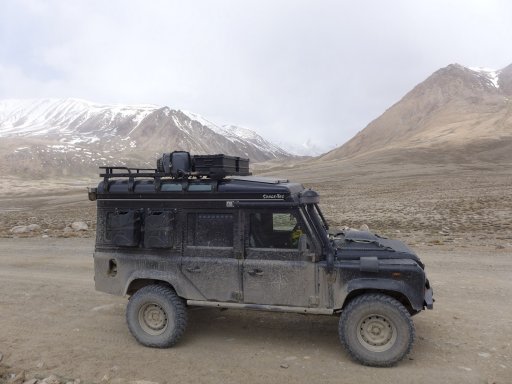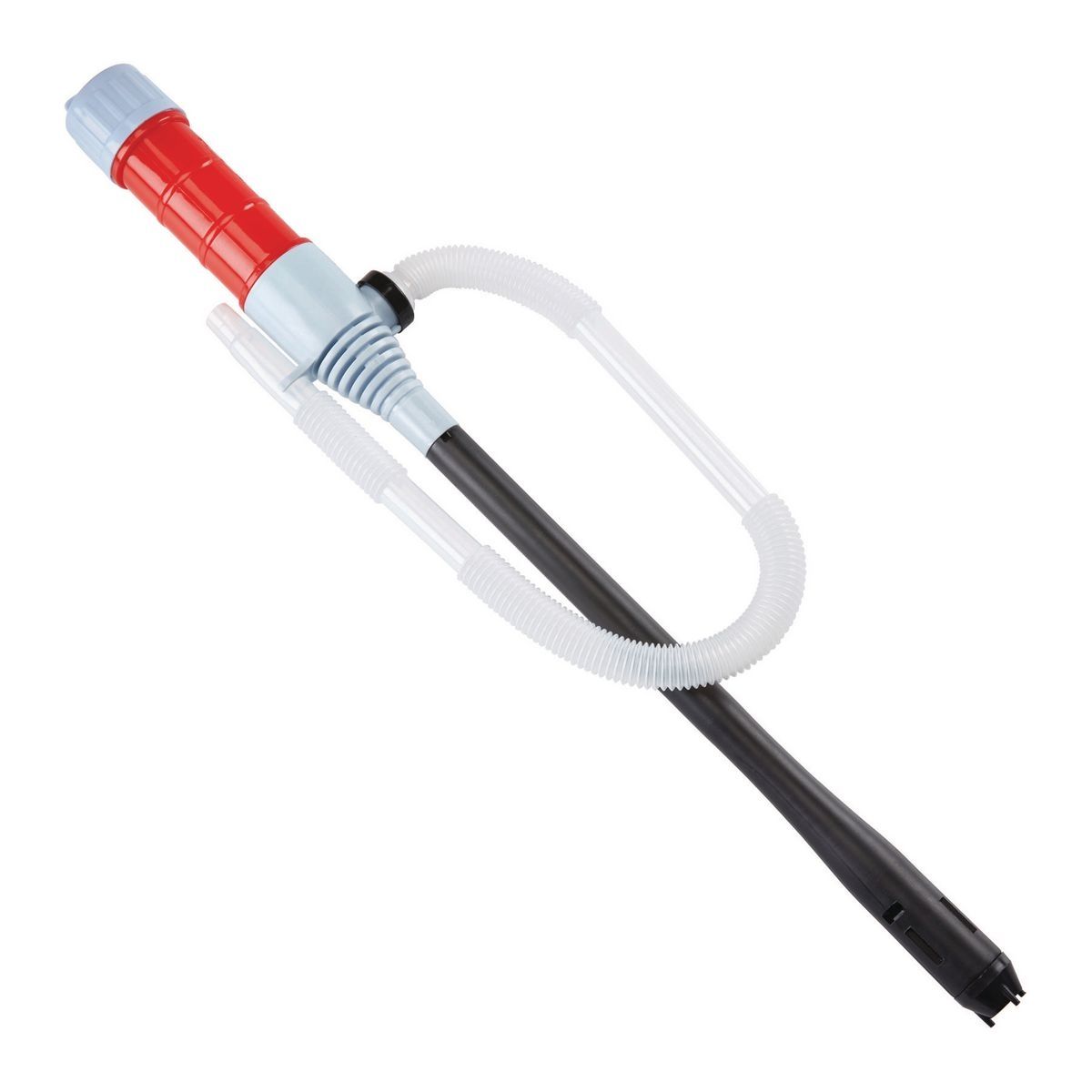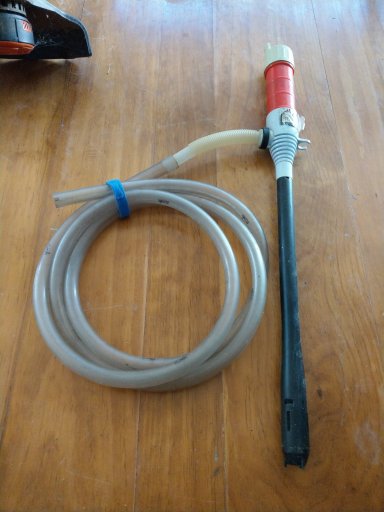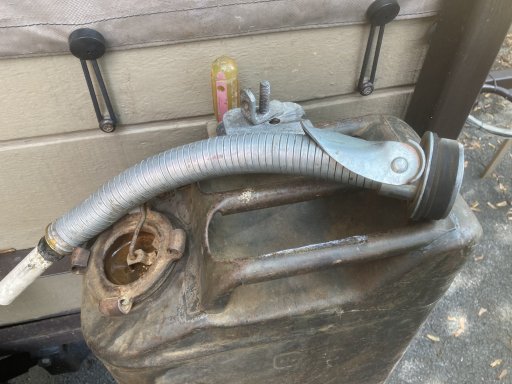This has probably already been suggested but here is my two cents on trying to gas up on the trail. I have never not made a mess when pouring gas from my can into my rig. So on my last build I mounted my fuel cans higher then the gas cap, now I use a siphon bulb and transfer fuel via a hose. No more mess!! I purchased a boat siphon bulb and hose then added about a 2 foot piece of stainless tube that drops down into my fuel can. This keeps the hose in place so you don't have to fiddle with keeping it in the can.
-
Guest, UPDATE We went through the site migration runbook and completed all steps. We will need to complete the migration next week, but will leave the forums up for the weekend. A few days after maintenance, a major upgrade revision to the forum site will occur.
Red_Leaf_Overland
Rank V

Advocate III
I use race style cans because they are way easier to deal with and can be used without spilling anything. I have nowhere to mount cans on either of my vehicles so they either get strapped to the cargo basket of my compass ( or trailer if I have it with me) or right at the back in my tj with all windows open or top off ( usually top is fully open and hald doors open as well.)This has probably already been suggested but here is my two cents on trying to gas up on the trail. I have never not made a mess when pouring gas from my can into my rig. So on my last build I mounted my fuel cans higher then the gas cap, now I use a siphon bulb and transfer fuel via a hose. No more mess!! I purchased a boat siphon bulb and hose then added about a 2 foot piece of stainless tube that drops down into my fuel can. This keeps the hose in place so you don't have to fiddle with keeping it in the can.
The race cans have a hard portion at the end of the hose that hold into the fuel filler quite well, and they drain quickly. I'm shirt and the jeep is tall so I usually throw it up on my shoulder then open the air inlet and no mess.
I have considered doing exactly what you are saying though. No need to hoist up fuel on my shoulder lol.
Would a kayak bilge pump, or fish tank drain pump work? Then it wouldnt matter if the cans were high or low (no comments from the peanut gallery!) and you ought to be able to move the gas, as long as the hoses reachI use race style cans because they are way easier to deal with and can be used without spilling anything. I have nowhere to mount cans on either of my vehicles so they either get strapped to the cargo basket of my compass ( or trailer if I have it with me) or right at the back in my tj with all windows open or top off ( usually top is fully open and hald doors open as well.)
The race cans have a hard portion at the end of the hose that hold into the fuel filler quite well, and they drain quickly. I'm shirt and the jeep is tall so I usually throw it up on my shoulder then open the air inlet and no mess.
I have considered doing exactly what you are saying though. No need to hoist up fuel on my shoulder lol.
Red_Leaf_Overland
Rank V

Advocate III
I would imagine it would.the race cans have a large opening in the top before the hose. Could probably almost fit an electric sump in them lol. I am planning on building a rack for the tire carrier of my bigger jeep.to hold them, I may add a super siphon or something to list of parts lol.Would a kayak bilge pump, or fish tank drain pump work? Then it wouldnt matter if the cans were high or low (no comments from the peanut gallery!) and you ought to be able to move the gas, as long as the hoses reach

Advocate I

Member III

Influencer III
- 4,312
- First Name
- Rex
- Last Name
- Drake
- Member #
-
19540
- Ham/GMRS Callsign
- KI5GH
- Service Branch
- Air Force
No!Would a kayak bilge pump, or fish tank drain pump work? Then it wouldnt matter if the cans were high or low (no comments from the peanut gallery!) and you ought to be able to move the gas, as long as the hoses reach
At best the the internal parts would rapidly fail due to solvent action. Then there’s always a chance of a stray spark causing a fire.
Ok. However, they must make something similar that withstands the corrosive action of gasoline. You could work it by hand. I dont know exactly but I'm sure something could be rigged up.No!
At best the the internal parts would rapidly fail due to solvent action. Then there’s always a chance of a stray spark causing a fire.
It is JERRY can. After the German fuel can of WWII.
A super syphon is the best method I've found to transfer fuel. The trick is to have a good place to put the can above the fuel tank.
A super syphon is the best method I've found to transfer fuel. The trick is to have a good place to put the can above the fuel tank.

Advocate III
- 5,584
- First Name
- Michael
- Last Name
- Rose
- Member #
-
20990
- Ham/GMRS Callsign
- W7FSB
- Service Branch
- US ARMY Retired
It’s called the primer bulb for a boat…Ok. However, they must make something similar that withstands the corrosive action of gasoline. You could work it by hand. I dont know exactly but I'm sure something could be rigged up.
Ogrmar Fuel Line Assembly 3/8" Inner Dia 5/8" Outer Dia Hose Line Marine Outboard Boat Motor RVs Fuel Assembly with Primer Bulb Steel Hose Clamps 6FT
Or the Jiggly Hose from above, or the super syphon…. Personally I just use my old pre CARB compliant spouts on my jerry cans.

Protector III
- 14,131
- First Name
- Bjoern
- Last Name
- Eldracher
- Member #
-
20111
- Ham/GMRS Callsign
- DO3BE
The super syphon hoses work great. For long trips where fuel supply can be an issue, I carry a jerrycan or two. These are mounted just above the fuel filler cap. I have attached the jerrycans in a way, that they do not even have to be removed for refueling them and also not for refilling the fueltank from the jerrycans.


I had a similar set up on my Land Cruiser. I could refuel from the roof without removing the cans.The super syphon hoses work great. For long trips where fuel supply can be an issue, I carry a jerrycan or two. These are mounted just above the fuel filler cap. I have attached the jerrycans in a way, that they do not even have to be removed for refueling them and also not for refilling the fueltank from the jerrycans.
View attachment 212933

Protector III
- 14,131
- First Name
- Bjoern
- Last Name
- Eldracher
- Member #
-
20111
- Ham/GMRS Callsign
- DO3BE
I had a similar set up on my Land Cruiser. I could refuel from the roof without removing the cans.
That's good. This makes refueling from the jerrycan very easy and you can do it right away when there is free capacity in the fueltank. This means that you don't have to carry the fuel around in jerrycans for an unnecessarily long time, which is unfavorable in terms of weight distribution, but where it is also safer, namely in the fueltank.
By the way, what just comes to my mind in addition. Please always remember that in different countries, there are different regulations for carrying jerrycans. Likewise, this can be an issue at borders in terms of customs regulations if the jerrycans are filled.

Steward I
- 1,108
- First Name
- Tom
- Last Name
- Kirkbride
- Member #
-
30006
- Ham/GMRS Callsign
- K1EOD
- Service Branch
- Army
I would be cautious using any electrical pump that was not treated for use in a hazardous environment. Its the fumes, and it just takes one spark, stay with a manual hose. Just my two-centsWould a kayak bilge pump, or fish tank drain pump work? Then it wouldnt matter if the cans were high or low (no comments from the peanut gallery!) and you ought to be able to move the gas, as long as the hoses reach
madcratebuilder
Rank V

Pathfinder I
You cab buy battery powered fuel pumps, they come with different adapters for different can types. Powered by 2 or 4 AA batteries or 12V, rain proof, cost $60-120 depending on quality and volume of fuel moved.

Off-Road Ranger I
- 2,865
- First Name
- Donald
- Last Name
- Diehl
- Member #
-
0745
- Ham/GMRS Callsign
- WRPN 506
most kayak bilge pumps are manual. The corrosive nature of gasoline would be your biggest issue here, I thinkI would be cautious using any electrical pump that was not treated for use in a hazardous environment. Its the fumes, and it just takes one spark, stay with a manual hose. Just my two-cents

Off-Road Ranger I
- 3,507
- First Name
- Mike
- Last Name
- Roots
- Member #
-
16968
- Ham/GMRS Callsign
- GMRS: WSGB862
- Service Branch
- USAF
I've been using this battery operated liquid transfer pump for years. I just added a longer tube. Works great for filling lawn equipment too.

 harborfreight.com
harborfreight.com


Battery-Operated Liquid Transfer Pump
Amazing deals on this Transfer Pump Battery Operated at Harbor Freight. Quality tools & low prices.


Enthusiast II
I second this. Been using it on Quad and Side x Sides for years and works good with Rotopax also.I've been using this battery operated liquid transfer pump for years. I just added a longer tube. Works great for filling lawn equipment too.

Battery-Operated Liquid Transfer Pump
Amazing deals on this Transfer Pump Battery Operated at Harbor Freight. Quality tools & low prices.harborfreight.com
View attachment 213650

Member III
- 2,827
- First Name
- Tom
- Last Name
- Houston
- Member #
-
8300
- Ham/GMRS Callsign
- WØNUT Extra
Due to Jeep XJ fuel pumps having a history of dying, I carry a spare under the back seat. I have a 20 foot piece of fuel line and a cable with connectors for it. I just drop it in the can on the trailer and put the hose in my vehicle. I then plug it into a cigarette lighter and can empty the can in just a few minutes without removing the Jerry can or making a mess.

